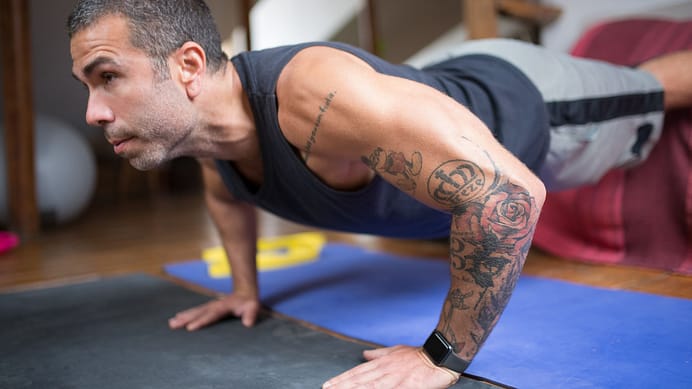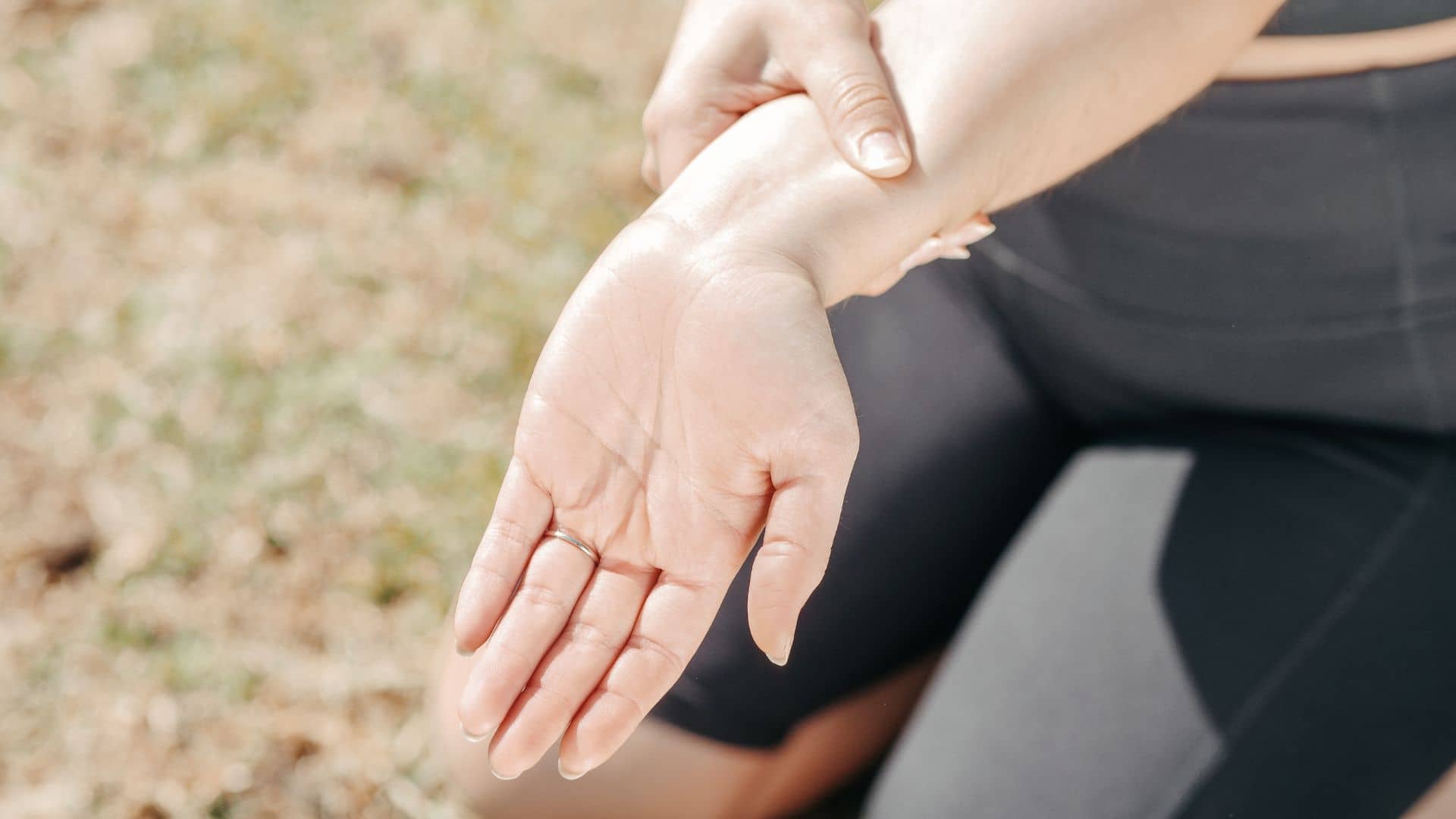Do you ever feel the strain on your wrists when you do pushups? Have you ever wondered why your wrists take so much of the pressure? Let‘s explore the science behind why you feel pushups on your wrists and find some solutions to make your workouts more comfortable.
You may feel pushups on your wrists due to various reasons, such as improper form, lack of wrist strength, or underlying medical conditions such as ligament injury, ganglion cyst, or carpal tunnel syndrome. Not having enough wrist strength can lead to pain during pushups . Furthermore, medical conditions like ganglion cyst and ligament injury can cause a pinching sensation over the back of your wrist during pushups. In some cases, leaning your body too far forward during the exercise can pull your wrist into an extended position and cause pain. It is important to identify the underlying cause of wrist pain during pushups to address the issue properly.
You may feel pushups on your wrists due to various reasons.
Improper form during pushups can cause wrist pain. For example, placing your hands too far apart or too close together can put undue stress on your wrists, resulting in pain.
In addition, not keeping your wrists in a neutral position while doing pushups can also cause pain. It is important to keep your wrists straight and aligned with your forearms to minimize the risk of injury.
Lack of wrist strength is another common cause of wrist pain during pushups. If your wrists are not strong enough to support your body weight during the exercise, you may experience pain.
To build wrist strength, it is recommended to perform wrist strengthening exercises, such as wrist curls and reverse wrist curls, before attempting pushups.
Underlying medical conditions such as ligament injury, ganglion cyst, or carpal tunnel syndrome can also cause wrist pain during pushups.
Ligament injury can occur due to overuse or trauma, and can cause pain, swelling, and difficulty moving the wrist .
A ganglion cyst is a fluid-filled sac that develops on top of a joint or tendon, and can cause pain and discomfort during pushups .
Carpal tunnel syndrome occurs when the median nerve, which runs through the wrist, becomes compressed, and can cause pain, numbness, and tingling in the hand and wrist .
If you suspect that an underlying medical condition is causing your wrist pain, it is important to consult a healthcare professional for proper diagnosis and treatment.

Not having enough wrist strength can lead to pain during pushups.
According to Redefining Strength, wrist pain during pushups can be caused by a lack of proper wrist strength and mobility.
It is important to work on wrist strength and mobility to avoid compensating with other parts of the body, which can eventually lead to elbow, shoulder, and neck pain.
Incorporating wrist exercises and stretches into your warm-up can help improve wrist strength and mobility and prevent pain during pushups.
Medical conditions can cause a pinching sensation over the back of your wrist during pushups.
Ganglion cysts and ligament injuries are both medical conditions that can cause a pinching sensation over the back of the wrist during pushups.
Ganglion cysts are fluid-filled lumps that most often appear along the tendons or joints of wrists or hands, and can also occur in ankles and feet.
They are typically round or oval and are filled with a jelly-like fluid.
Ligament injuries can also occur in the wrist and cause pain and tenderness on the back of the wrist.
During pushups, the position of the wrist can exacerbate the pinching sensation caused by these conditions.
The wrist is extended and bears the weight of the body, which increases pressure on the tendons and joints at the back of the wrist.
This pressure can cause increased pain and discomfort in individuals with ganglion cysts or ligament injuries.
Treatment for ganglion cysts and ligament injuries varies depending on the severity of the condition. Conservative management, such as using a wrist brace or splint, can help alleviate symptoms and reduce the size of the ganglion cyst. If these methods are not effective, a doctor may recommend aspiration or surgery to remove the cyst. For ligament injuries, treatment may include rest, ice, compression, and elevation (RICE), physical therapy, or in severe cases, surgery.
Leaning your body too far forward during exercise can cause wrist pain.
When performing pushups, it is important to maintain proper form to avoid injury, and leaning too far forward can cause wrist pain.
When you lean too far forward during the exercise, the wrists can be pulled into an extended position, which can cause discomfort and pain.
This position puts excessive pressure on the wrist joints, tendons, and muscles, which can lead to pain and even injury.
To avoid wrist pain during pushups, it is important to maintain proper form.
The hands should be placed shoulder-width apart, and the wrists should be in a neutral position, aligned with the forearms.
The body should be kept in a straight line from the shoulders to the feet, and the elbows should be kept close to the body.
Proper form helps to distribute the weight evenly across the wrists, reducing the risk of injury.
If you experience wrist pain during pushups or any other exercise, it is important to stop the exercise and rest. If the pain persists, consult a healthcare professional for proper diagnosis and treatment.
My final thought
Identifying the underlying causes of wrist pain during pushups is crucial to address the issue properly. Wrist pain can be caused by various factors, such as poor wrist strength and mobility, medical conditions like ganglion cysts and ligament injuries, or improper form during exercise.
Each of these issues requires a different approach to treatment and management.
If the pain is caused by poor wrist strength and mobility, incorporating wrist exercises and stretches into your workout routine can help improve your wrist strength and flexibility, reducing the risk of injury.
On the other hand, if the pain is caused by a medical condition like ganglion cysts or ligament injuries, conservative management or surgical intervention may be required, depending on the severity of the condition.
Improper form during the exercise can also cause wrist pain. In this case, correcting your form can help alleviate the pain.
For example, keeping your wrists in a neutral position and avoiding leaning too far forward can reduce the stress on your wrists.
Ignoring wrist pain during pushups can lead to further injury and chronic pain. Proper diagnosis and treatment are essential for a full recovery and to prevent further complications.
Here is a chart table with 20 potential scenarios and fixes for wrist pain during pushups:
Scenario |
Fix |
|---|---|
| Poor wrist strength and mobility | Incorporate wrist exercises and stretches into your workout routine to improve wrist strength and flexibility. |
| Improper form (leaning too far forward) | Focus on keeping your body in a straight line during pushups and avoid leaning too far forward. |
| Improper form (flaring elbows out) | Keep your elbows close to your body to reduce stress on your wrists. |
| Improper form (placing hands too far apart) | Keep your hands shoulder-width apart or slightly closer to avoid putting excessive pressure on your wrists. |
| Improper form (placing hands too close together) | Keep your hands shoulder-width apart or slightly wider to avoid overloading the wrists. |
| Medical conditions (arthritis) | Consult a healthcare professional for diagnosis and treatment. They may recommend medications, physical therapy, or other treatments to manage symptoms. |
| Medical conditions (carpal tunnel syndrome) | Consult a healthcare professional for diagnosis and treatment. They may recommend splinting, medication, or surgery to relieve pressure on the median nerve. |
| Medical conditions (tendonitis) | Consult a healthcare professional for diagnosis and treatment. They may recommend rest, ice, compression, and elevation (RICE), physical therapy, or other treatments to reduce inflammation and pain. |
| Ganglion cysts | Consult a healthcare professional for diagnosis and treatment. They may recommend aspiration or surgery to remove the cyst. |
| Ligament injuries | Consult a healthcare professional for diagnosis and treatment. They may recommend rest, ice, compression, and elevation (RICE), physical therapy, or surgical intervention, depending on the severity of the injury. |
| Overuse | Allow your wrists to rest and recover between workout sessions. If you are doing too many pushups or performing them too frequently, reduce the frequency or duration of the exercise until your wrists have had a chance to recover. |
| Wrist wraps | Consider using wrist wraps to provide additional support and stability to your wrists during pushups. |
| Grip strength | Improve your grip strength with exercises like farmer’s carries or deadlifts to reduce the strain on your wrists during pushups. |
| Wrist position | Keep your wrists in a neutral position during pushups, neither flexed nor extended, to reduce strain on the joint. |
| Pushup modifications | Modify the pushup exercise to reduce the load on your wrists, such as performing pushups on your fists or on dumbbells. |
| Yoga blocks | Use yoga blocks to elevate your hands during pushups, which can reduce the strain on your wrists. |
| Forearm planks | Build up your forearm strength with exercises like forearm planks to reduce the load on your wrists during pushups. |
| Dumbbell exercises | Incorporate dumbbell exercises like wrist curls or reverse wrist curls to build wrist strength and improve mobility. |
| Resistance band exercises | Use resistance bands to perform exercises that strengthen the wrist, such as wrist extensions and flexions. |
| Consult a personal trainer | Consider working with a certified personal trainer who can help you improve your form and identify areas where you may need to focus on mobility and strength. |
It is important to identify the underlying cause of wrist pain during pushups and address it properly to prevent further injury. By incorporating wrist exercises and stretches, correcting your form, consulting a healthcare professional if necessary, and allowing your wrists to rest and recover, you can reduce the risk of wrist pain during pushups and perform the exercise safely and effectively.
Conclusion
In conclusion, wrist pain during pushups can be caused by a variety of factors, including poor wrist strength and mobility, medical conditions like ganglion cysts and ligament injuries, and improper form during the exercise.
It is important to identify the underlying cause of wrist pain to address the issue properly.
Incorporating wrist exercises and stretches into your workout routine can improve wrist strength and flexibility, while conservative management or surgical intervention may be required for medical conditions.
Correcting your form during the exercise can also alleviate the pain. Ignoring wrist pain can lead to further injury and chronic pain, so proper diagnosis and treatment are essential for a full recovery and to prevent further complications.
By maintaining proper form and identifying the underlying cause of wrist pain, individuals can perform pushups safely and effectively without experiencing pain or injury.
Sources:
- health.usnews
- healthline
- livestrong
- medicalnewstoday
- mayoclinic
- verywellfit
- shape
- yalemedicine
- orthoinfo
- redefiningstrength


